5 best places to hike in Tasmania
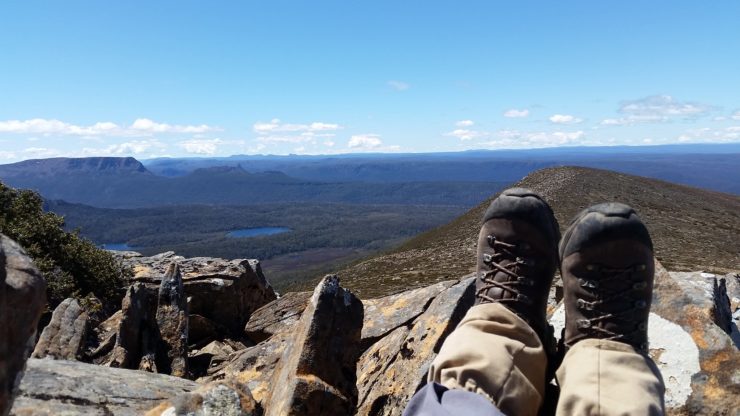
5 best places to hike in Tasmania
Posted on
Tasmania, the heart of hiking in Australia, entices nature lovers and adventure seekers from around the world. During my first visit to Tasmania in 1996, I became infatuated with the untamed wilderness and rugged landscape of this island state. From the towering dolerite peaks of Cradle Mountain to the crystal-clear waters of Wineglass Bay, there is a unique charm that captivates all who visit her shores.
The separation of Tasmania from our mainland and the preservation of her wilderness areas has created a natural paradise. Local wildlife abounds on the island; featuring wombats, wallabies, quolls, Tasmanian devils, penguins, and even the most elusive critter, the platypus. This wonderland also boasts an amazing diversity of native vegetation, with a high proportion of endemic plants, the world’s tallest flowering plant, the Mountain Ash (Eucalyptus regnans) and some of the oldest trees on earth, the Pencil Pine (Athrotaxis cupressoides). A simple day walk can feel like a journey into a different world.
Over the past 25 years I have spent many years exploring this wild southern land. Personal expeditions and guided tours have taken me to some of the most remote areas of the island. One thing I have discovered, is that you don’t need to get to the most remote and rugged wilderness regions to cultivate a love of Tassie.
Here are 5 of the best places to hike in Tasmania; where you can do some amazing day walks, immerse yourself in nature and experience Tasmania at her best.
- Cradle Mountain – Lake St Clair National Park
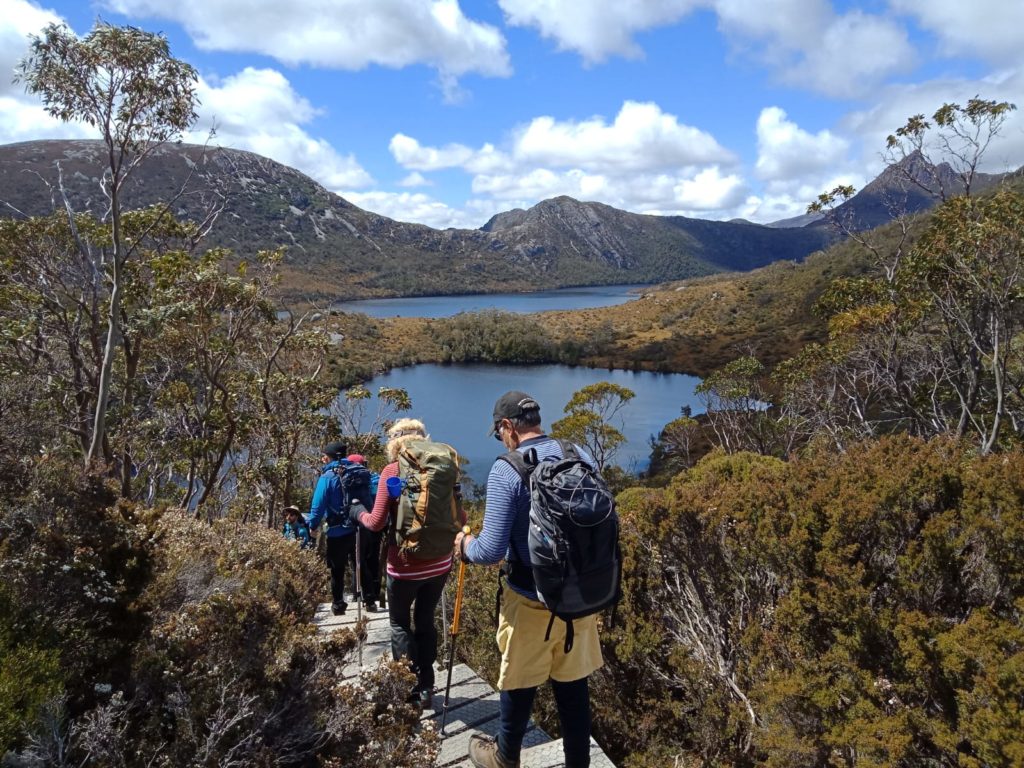
This world-renowned National Park covers the northern reaches of the Tasmanian Wilderness World Heritage Area, and has been preserved “for the people, for all time” (Gustav Weindorfer, 1910).
To the north, the rugged profile of Cradle Mountain dominates your view as you meander around the shores of Dove Lake, climb up the rocky ledges of Marion’s lookout or traverse around Hanson’s Peak. In the south, the tannin-coloured waters of Lake St Clair – the deepest lake in Australia – bring a sense of tranquillity to those who quietly observe the ‘sleeping waters’ of leeawuleena (the Aboriginal name for this area).
There are many walk trails throughout this park which vary in length and difficulty. The Overland track is a 6-day hike, which draws thousands of hikers from around the world every year. It begins near Cradle Mountain in the north and heads south towards the shores of Lake St Clair. In between is a network of trails and peaks, waiting to be discovered by the curious hiker.
Each particular day walk has its’ own highlights, which may include forests of towering King Billy pines (Athrotaxis selaginoides), steep-sided lakes enveloped in deciduous beeches (Nothofagus Gunii), sweeping 360-degree views of folded mountain ranges and the occasional opportunity to spot a wombat in the button grass plains.
Top day walks in this area;
- Cradle Mountain Summit track (via Crater Lake) – a challenging full day hike – 5-8 hours (return)
- Dove Lake circuit – an easy stroll – 2-hours (return)
- Shadow Lake walk – a moderate walk – 4 hours (return)
- Mt Rufus Circuit – a challenging full day hike – 5-6 hours (return)
(Want to hike this area on a pack free, accommodated, guided tour? Check out our Central Highlands Tasmania Tour – Cradle Mountain, Mt Field National Park, Lake St Clair)
2. Freycinet National Park
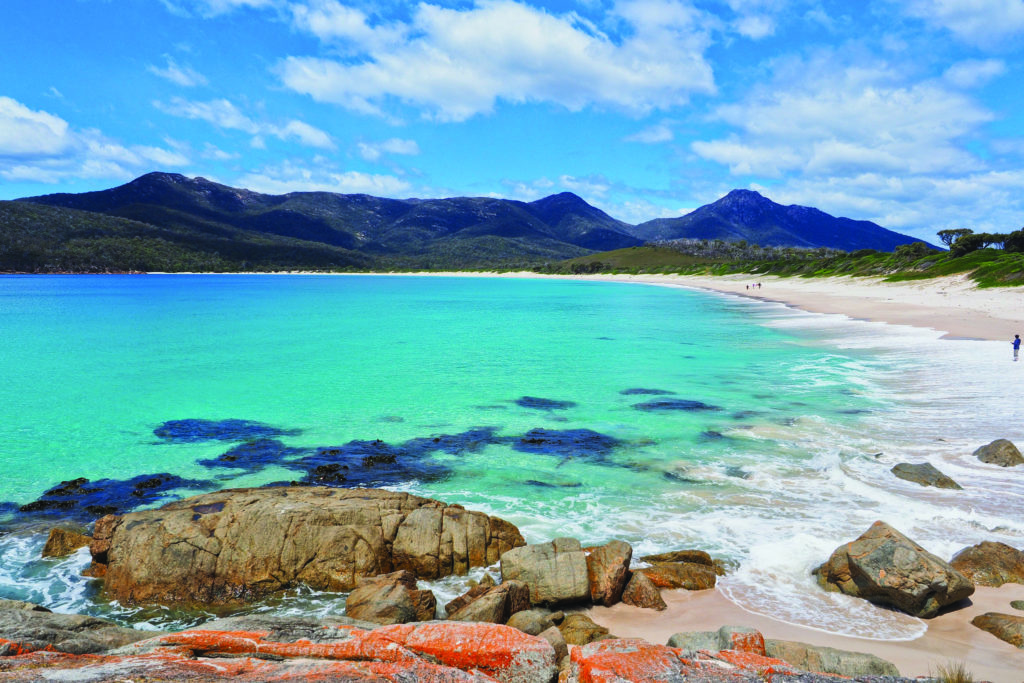
One of Tasmania’s most memorable scenic spots, Wineglass Bay, is a highlight of this coastal region. Sparkling clear waters caress the shores of brilliant white beaches; whilst the weathered, lichen-encrusted granite outcrops provide a dramatic backdrop as you immerse yourself in this stunning coastal landscape. Local wildlife can frequently be encountered whilst you explore the area, these include; Bennett’s wallabies, pademelons and echidnas on the land, whilst seals, southern right whales and a sneaky little penguin or two (Eudyptula minor) may also be spotted in the sea at the right time of the year.
There are many lovely walks around this area ranging from short scenic visits to the lighthouse at Cape Tourville to a 3-day hike around the Freycinet Peninsula. Most of the hikes are quite moderate along the beaches; however, if you like awe-inspiring views, it is definitely worth a climb to the top of one of the peaks in the area.
Top day walks in this area;
- Wineglass Bay Lookout – a moderate walk – 1 hour (return)
- Wineglass Bay to Hazards Beach Circuit – a moderate walk – 5-6 hours (return)
- Mt Amos – a challenging hike – 3 hours (return)
(Want to hike this area on a pack free, accommodated, guided tour? Check out our Tasmanian’s East Coast Tour – Wineglass Bay, Maria Island, Three Capes Track)
3. Mt Field National Park
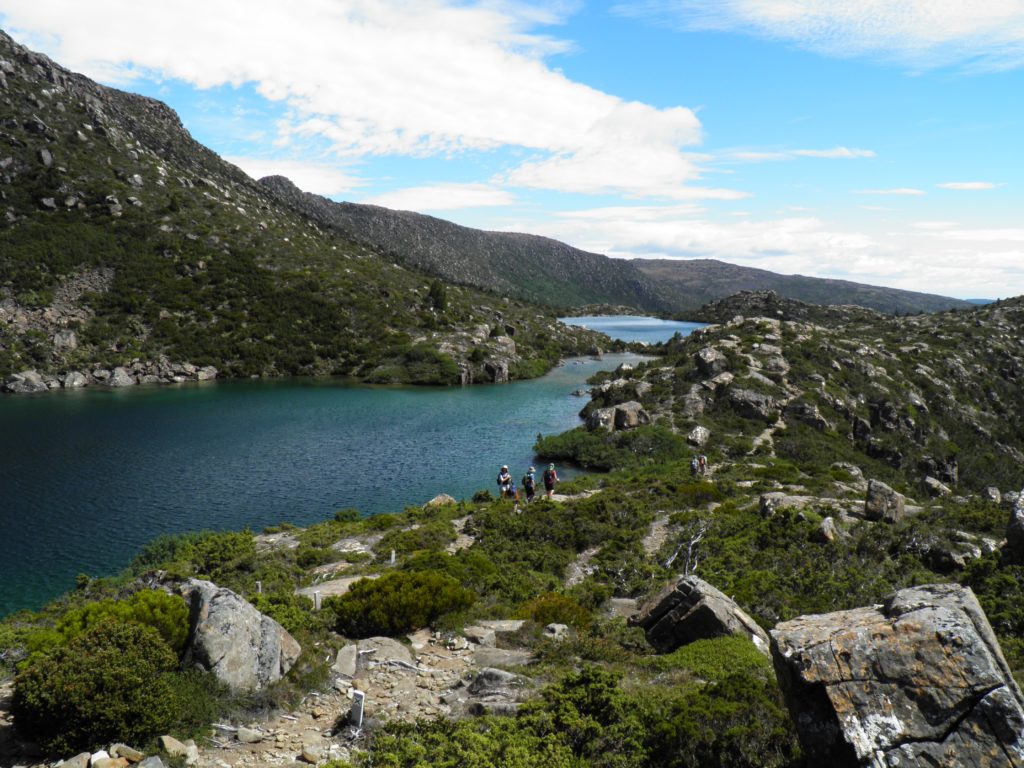
A dramatic contrast in scenery begins to unfold as you explore what makes this place so precious and worthy of its’ Wilderness World Heritage Listing. The dense forests of the lower altitudes provide a peaceful haven for the gentle giant Mountain Ash, the towering soft tree ferns and the much-admired Myrtle beech. As you ascend into the sub-alpine and alpine regions of this park, the dense tree cover falls away to reveal glacial-sculpted lakes and tarns that provide a home to the large array of native flora. Interesting specimens of the world’s tallest heath plant, Richea pandanifolia, along with its’ prickly cousin Richea scoparia, several species of cushion plants, an array of mountain berries and the colourful endemic snow gum, Eucalyptus cocciferia, can all be found to the observant hiker.
The walks in this area represent a diverse variety of forests and alpine landscapes that make walking in Tasmania such a unique experience. From the moss-encrusted pathways leading to Tassie’s most stunning waterfall, Russell Falls, to the open alpine meadows of Tarn shelf, you would be doing yourself a huge disfavour to miss out on a walk in this region.
Top day walks in this area;
- Lady Barron and Russell Falls circuit – a moderate walk – 2 hours (return)
- Tarn Shelf – a moderate walk – 5-7 hours (return)
- Mt Field West – a challenging full day hike – 6 – 8 hours (return)
(Want to hike this area on a pack free, accommodated, guided tour? Check out our Central Highlands Tasmania Tour – Cradle Mountain, Mt Field National Park, Lake St Clair)
4. Tasman National Park
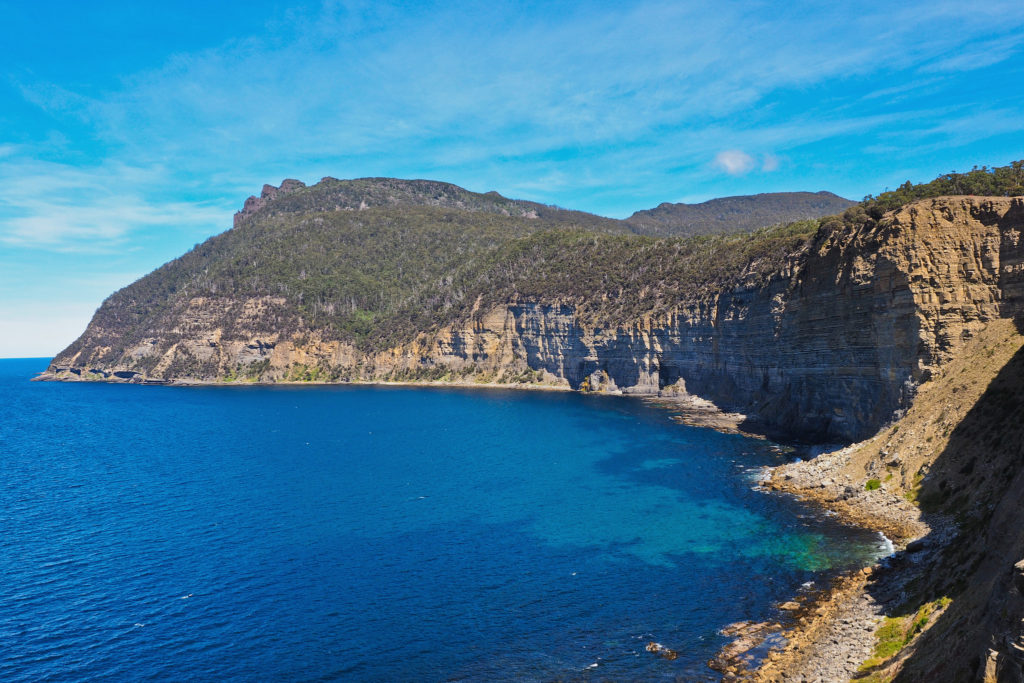
As the wild Southern Ocean pounds against the tallest sea cliffs in Australia, you can easily see why this area has become so popular with hikers, climbers and the bravest surfers from around the world! Towering dolerite cliffs with hidden caves and scenic archways, dominate the scenery on the Tasman Peninsula. Tall eucalypt forests creep out toward the edges of these cliffs and create a cloak of greenery to contrast with the deep blue waters below. The protected forests, nutrient rich waters and array of offshore islands, provide homes to an abundance of land and ocean wildlife, including; seals, dolphins, whales, little penguins, some threatened species of birds and a familiar collection of native Tasmanian mammals.
Venturing out on a walk in this area can be as short as a few hours or as long as the multi-day 3 Capes walk. Be sure to bring along the zoom lens for your camera as you attempt to spot climbers on the world-renowned Totem Pole (near Cape Huay) or some dare-devil big wave surfers at Ship-Sterns bluff (seen from the Cape Raoul walk).
Top day walks in this area;
- Cape Huay – a moderate to difficult walk – 4 hours (return)
- Cape Raoul – a challenging walk – 5-6 hours (return)
5. Maria Island National Park
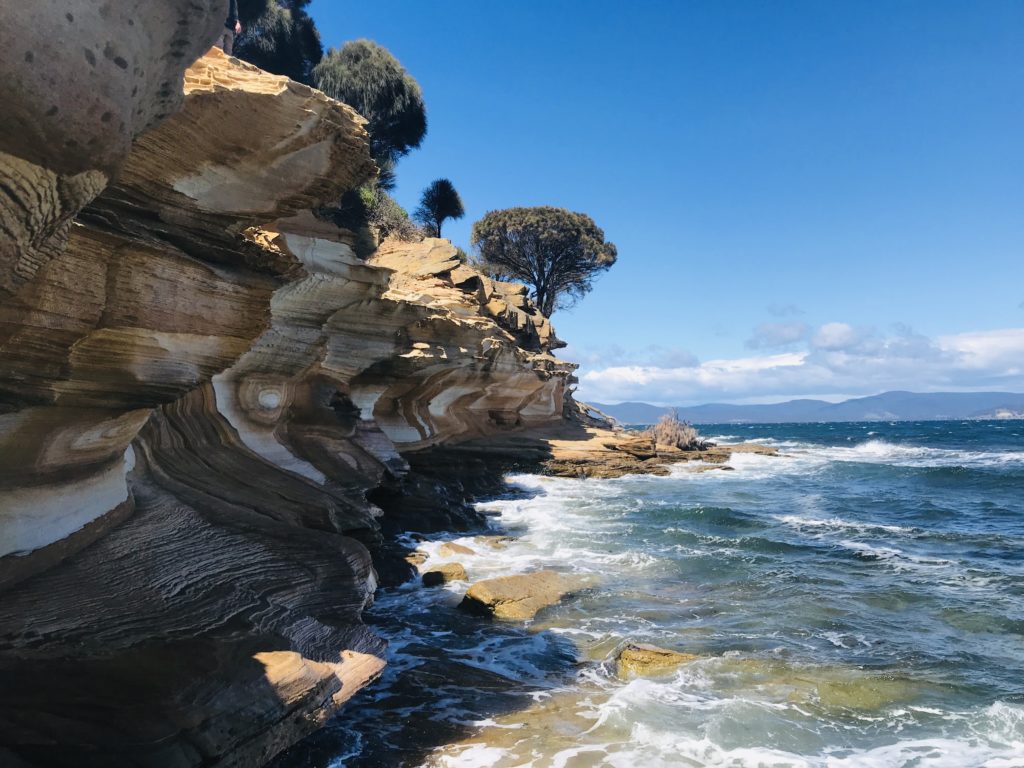
A journey back to the convict heritage of Tasmania’s past – Maria Island provides a wonderful escape from the mainland. This contrast between European heritage in the settlements, the rich Aboriginal culture and the spectacular natural features that abound on this island make it an interesting outing for all who venture across.
Maria Island can also be a very rewarding place to visit if you enjoy a bit of bird-watching, with around 129 species of birds living in seven different habitats. You may be fortunate to find an endangered forty spotted pardalote (Pardalotus quadragintus), or one of the threatened swift parrots (Lathamus discolour) that breed on this protected island.
Some of the main features of day walks on the island, include the painted sandstone cliffs to the west, the fossil-encrusted outcrops on the northern shores and the rocky peaks of Bishop and Clerk.
Top day walks in this area;
- Bishop and Clerk – a challenging walk – 4-5 hours (return)
- Painted Cliffs – a moderate walk – 1.5 – 2.5 hours (return)
- Fossil Cliffs – a moderate walk – 1.5 – 2.5 hours (return)
(Want to hike this area on a pack free, accommodated, guided tour? Check out our Tasmanian’s East Coast Tour – Wineglass Bay, Maria Island, Three Capes Track)
Although Tasmania boasts some of the toughest trails in Australia, there are also many other trails that are easily accessible to novice hikers and absolutely spectacular places to visit! The best times of year to visit are between November to April, when the weather is a little milder. But remember to always come well prepared as it can snow in the middle of summer, like I discovered one time whilst I was out camping, with a foot of snow falling on Boxing Day in the Central Plateau region!
The National Parks and wilderness areas mentioned above represent only a small selection of Tasmania’s attractions. It is by no means an extensive list of places to visit and there are still so many more awe-inspiring places; some you can reach on day walks and others that must be reached by multi-day expeditions. I’m sure I will be going back for many years to come as I plan to re-visit some old favourite spots and hope to discover some new favourites in the future. Happy hiking folks, I hope to see you out there some time soon!
-Guide Michelle



